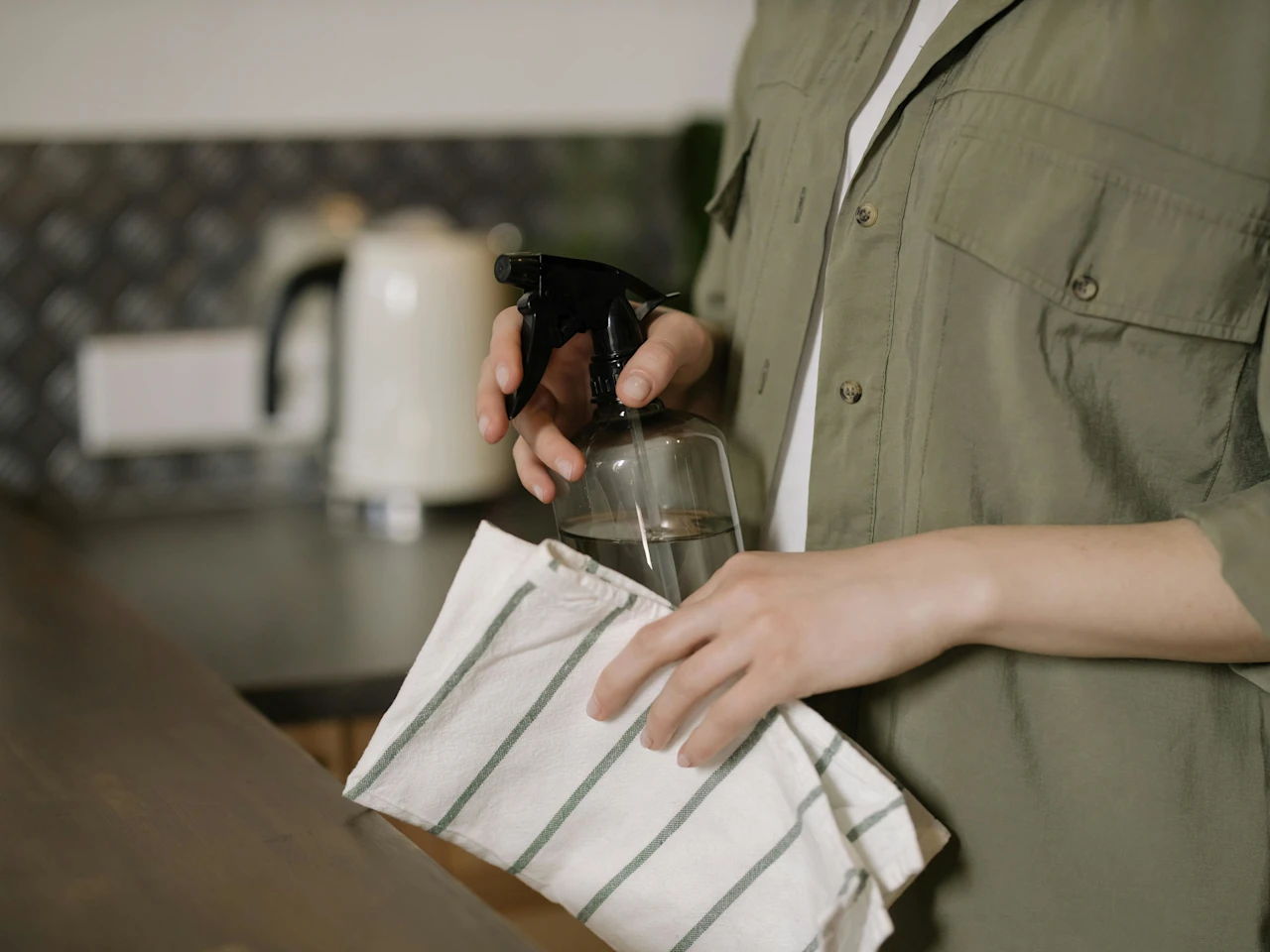
6 minute read
Could ‘Death Cleaning’ be a Part of Your Estate Planning Action Plan?
Discover döstädning, the Swedish art of death cleaning. Learn how decluttering with gratitude can uplift you and simplify estate planning for your loved ones.

Maya Powers, @MayaPowers
Estate Planning Content Expert, Trust & Will
Peacock’s latest television show “The Gentle Art of Swedish Death Cleaning” is creating a buzz, and while the title might sound depressing at first, critics are describing it as surprisingly uplifting. The series, developed by comedian and author Amy Poehler, was inspired by Margareta Magnusson’s bestselling book about a Swedish tradition. Death cleaning isn’t just about decluttering, it’s also a mindful life practice that also keeps your loved ones in mind. Trust & Will explains the philosophy behind the gentle art of Swedish death cleaning and why it could be the perfect item to add to your estate planning action list. Don’t forget to pick up our helpful tips at the end.
What is Döstädning: Death Cleaning?
“While one would usually say ‘clean up after yourself’ here we are dealing with the odd situation of cleaning up before…we die.”
The quote above is an excerpt from the book “The Gentle Art of Swedish Death Cleaning,” authored by Margareta Magnussen. Published in 2018, the book helped popularize the Swedish concept of döstädning, which has a literal translation of ‘death cleaning.’
However, death cleaning isn’t as morbid as it might sound at first. It can be likened to a mindful art, not unlike feng shui or Marie Kondo’s “Art of Tidying Up.” Magnussen provides tips on how to embrace minimalism while helping readers with advice on how to broach sensitive conversations. Her method also introduces elements of fun and curiosity for what could otherwise feel like a daunting task.
It is the practice of decluttering a lifetime’s worth of personal belongings and clutter before making one’s final departure. It has a very practical goal of consolidating your worldly possessions down to the treasures that you want to pass down to loved ones (and getting rid of the junk). However, the process can also have therapeutic side-effects. Not only can stripping down and letting go feel relieving, it can give you the opportunity to visit the memories of your past. Those who have practiced death cleaning have described it as a joyful opportunity to review your life.
Estate Planning Action Plan: Death Cleaning
Death cleaning and estate planning share several things in common.
1. They are artforms of leaving behind a legacy for your loved ones (and reduce the burden.)
Your Estate Plan is a collection of legal documents that make your final wishes known, as well as instructions for how your personal property and belongings should be left behind, among many other things. This means that eventually, when you pass away, your loved ones will have to inventory all the worldly possessions you’ve left behind and do something about them. In most cases, an individual will leave instructions for which belongings should be passed down to whom.
All too often, however, these instructions only address the prized or memorable possessions. They leave out the junk, down to the boxes of old and useless items in the garage, or ratty old t-shirts in the back of the closet that no one would want. Let’s be real — your daughter might love to have your 1979 Kiss concert tee, but she’s not going to lose sleep over a half-used spool of floss left forgotten in the back of your bathroom drawer.
“Some people can’t wrap their heads around death. And these people leave a mess after them. Did they think they were immortal?” — Margareta Magnussen
What we often don't think about — or don’t want to think about — is how the clutter, junk, and unwanted possessions are also inherited by your loved ones. When you eventually pass away, all these items could create an unnecessary burden for them. There are many instances where you will hear about adult children paying for a storage unit indefinitely with a deceased parent’s belongings because they simply didn’t know what to do with it all (and were too bereaved or felt too guilty to get rid of it.)
2. Not only can they help you face your own mortality, they can be surprisingly therapeutic.
Many people put off estate planning, decluttering, and other death-related activities for the complex and valid reason of not wanting to face their mortality. However, as we age, the fact of our mortality becomes more present and a perspective shift can happen. Instead of thinking of these activities as morbid, we can think of them as life-affirming and as a way to reflect on and celebrate the legacy you’ll one day be leaving behind for your loved ones. Shifting your mindset can be immensely therapeutic and help you gather the courage needed to get started.
3. They can be the perfect conversation starter with your loved ones.
For the same reason of not wanting to face one’s mortality, bringing up the topic of can be downright uncomfortable. While the culture around death does appear to be shifting, it is safe to bet that most families still do not talk openly about death and final wishes. However, they are still important conversations to have albeit difficult to broach.
If you are someone who has been struggling to open up about death with loved ones, estate planning and death cleaning can be perfect conversation starters. They are both practical gateways to let your loved ones know that you are preparing for your own death in a way that is loving and practical.
“Many adult children do not want to talk about death with their parents. They should not be afraid. We must all talk about death. If it’s too hard to address, then death cleaning can be a way to start the conversation.” — Margareta Magnussen
Death Cleaning Tips
When you apply the method of Swedish death cleaning, don’t simply think of it as decluttering and tossing out junk. Instead, think of it as a cleansing exercise where you change your relationship with your personal belongings. It’s not just about cleaning out the closet, but rather shifting your approach to disposing of things and acquiring new items moving forward. Taking charge and control can be refreshing and empowering. Keeping your loved ones in mind will also give you peace of mind knowing that the collection of items you own have value and are something you want to pass on. (No one needs to inherit those old, bunched up boxers shoved in the drawer.)
Here are some tips to keep in mind as you begin:
1. Start small.
In her book, Magnusson recommends that you start with easy and obvious things. Tackling emotionally heavy or meaningful things early on in the process can be discouraging, so it’s best to ease your way in. For example, start with a junk drawer and then move on to something methodical, like removing clothing that you never wear. You can eventually move on to those boxes that are stacked up in the garage. The point is to start with the low-hanging fruit, which represents items that you don’t have any emotional attachment to.
2. Don’t rush the process.
There is nothing about Swedish Death Cleaning that mandates for the process to be intense. Take your time! You’re preparing for an event that likely won’t take place for years if not decades, so there’s no need to get your cleaning done at once. For instance, you can tackle one project on a dedicated day each week and methodically move your way around the house. Getting into a habit of cleansing your material belongings will likely become an addiction.
3. Be thoughtful.
Consider the environment and people in need before you toss everything out in the garbage. As the idiom goes, “one man’s trash is another man’s treasure.” Sort your discarded items into separate piles, with each one dedicated for those that need to be trashed, what can be gifted, and what can be sold. This might be the time in your life where you become a whiz at selling items on resale or auction sites like eBay or Poshmark. Maybe you’ll even amass some extra cash for the vacation you’ve always wanted to take! Any items that can’t be sold can always be donated to charity for someone else who could benefit from them. Last but not least, be kind to the environment and make sure to dispose of or recycle any remaining items properly. This process alone can be a good reminder not to amass too many worldly possessions.
4. Adapt a minimalist mindset.
The hardest part about decluttering is often the emotional attachment you develop to your belongings. Even those shoes that you never wear: “but what if I find the perfect outfit to wear them with?” Here, the goal is to leave behind as little as possible for your loved ones to deal with when you pass away. It might be tough at first, but try to keep only what you need. (Here you can also infuse a little bit of Marie Kondo’s advice of only keeping things that “spark joy.”) Everything else goes.
5. Don’t forget about digital clutter.
A lot of advice regarding decluttering often ignores that vast amount of value we amass in the online space. We spend so much time on our computers, smartphones, tablets, and other devices. From an estate planning perspective, digital property passes down to your heirs with equal weight as physical property. From a decluttering perspective, so does digital “junk.” Take the time now to make your digital inheritance clean and organized for your loved ones. Sort photos and music and documents into neatly labeled file folders and delete the rest. Consider creating backups or investing in a digital vault that can be accessed with a single login that can be shared with an estate Executor.
6. Keep your beneficiaries in mind.
When you’re part way through your decluttering process, you might lose some wind from your sails or even start feeling confused about your method. Just like you would with any other big project, keep your “why” in mind. In this case, your “why” is your beneficiary (or beneficiaries.) Hold up an object and ask if it will bring joy to anyone besides yourself. If the answer is “no,” then you should probably get rid of it. If you’re ever in doubt, just ask your loved one if they would like it. There’s nothing stopping you from passing down some of your inheritance to your loved ones today. If you’re transparent about what you’re up to, they may appreciate having the opportunity to say “yes” or “no” to items you plan to pass down to them, even if it means you hold on to it for safekeeping in the meantime. That way, you won’t have any regrets about tossing out something they may have potentially wanted.
7. Buy less.
As you start decluttering your life, be careful not to re-clutter it. While it’s not practical to prevent yourself from buying anything, just be mindful not to limit your shopping. Think twice before purchasing any new items, and to keep your beneficiaries in mind. Do you really need to add another dress to your closet? The point isn’t to deprive yourself, but to put your new minimalist mindset to practice. Instead of buying multiple items, consider investing in a singular item of greater value that can be passed down to your son or daughter, for example.
8. Be open about your process.
Earlier on, we suggested how death cleaning could be the perfect prelude to open up a conversation about estate planning with your loved ones. While those close to you might not understand why you’re on this journey at first, being open about your process and your intention can get them on board. Further, it gives them an opportunity to speak up about any pieces that they don’t want you to get rid of. They might even want to chip in and help you declutter your house, which can be a beautiful moment to reflect on memories of your life and share them with your loved ones.
The New Age of Death Planning
Thinking about your own mortality is scary — this is something that should never be minimized. It can, is, and will be scary, for anyone. However, what we can do is to take charge and feel more empowered and surround ourselves with community. Death is something that we’ve historically kept to ourselves, but that is contributing to the scariness factor.
The lovely thing about Swedish death cleaning is that it embraces death in a very practical way that can not only be refreshing but empowering. The process of decluttering our lives with our loved ones in mind can actually be joyful. Not only is it an act of kindness such that your loved ones won't have to deal with your junk when you eventually pass away, it can help you be more intentional about what you want the rest of your life to look like. Clearing out old belongings can create the space to invite in something new.
Estate planning is no different. While it can take some courage to face your own mortality, taking matters into your own hands by planning your estate can feel incredibly empowering. You will have so much peace of mind knowing that your affairs are in order, and that you’ve had a say as to what should happen when you pass away. Further, it’s an act of love for your loved ones. Similar to death cleaning, you don’t have to do it all at once. We recommend starting small with actionable steps. The very first thing you could easily tackle is your Last Will and Testament. Don’t worry - we guide you through each step with easy-to-answer questions so that you’ll be done in no time. All from the comfort of your (newly decluttered) home with just a few clicks. Find out how to get started with Trust & Will today.
Is there a question here we didn’t answer? Browse more topics in our learn center or chat with a live member support representative!
Trust & Will is an online service providing legal forms and information. We are not a law firm and we do not provide legal advice.



